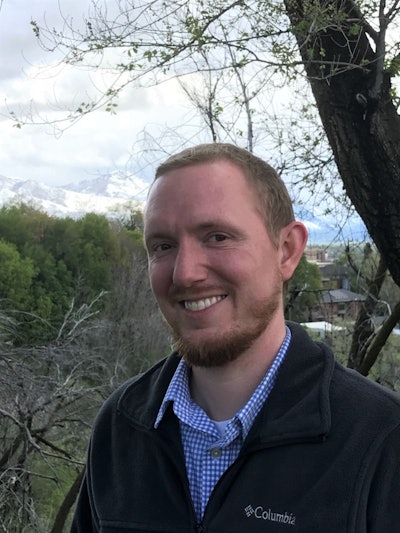Compared to other workforce fields in the United States, higher education holds the highest number of older employees, according to a new report published by College and University Professional Association for Human Resources’ (CUPA-HR).
The report, “The Challenges of an Aging Higher Ed Workforce,” points out the effects of an older workforce within higher education as well as gender pay inequity.
 Dr. Adam Pritchard
Dr. Adam Pritchard“If you highlight those areas on campus where there’s going to be a bigger impact, it provides opportunities for institutions to rethink that the way they do things, how they build their workforce, how they plan for succession and create a pipeline of individuals within higher education to continue working in those roles,” said Dr. Adam Pritchard, a senior survey researcher at CUPA-HR. “And we wanted to highlight those areas and the issues that come up in those areas.”
According to the research, the average age for all higher education staff is 45, compared to the national average of 42. Employees who are 55 years old and older make up 29 percent of the higher education staff compared to 23 percent of the rest of the U.S. workforce.
Pritchard presumes that higher education is aging because faculty and staff members believe in the mission of an education and are committed to staying longer lengths of time.
“I think it draws people in who are committed to the ideals of the institution as well as the work they do, regardless of what type of work that is,” he said.
Additionally, faculty in skilled craft, facilities, service and maintenance areas have the highest percentage of older workers, with nearly 40 percent or more over the age of 55, according to the CUPA-HR report.
Dr. Lynn Pasquerella, president of the Association of American Colleges and Universities (AAC&U), was not surprised by the findings.
“It’s the engagement with the academic community that can keep an individual thriving in the workforce,” said Pasquerella. “Once scholarship is fueled by the environment then that scholarship can take place over a lifetime. It’s not any particular period of time, say for a baseball player or football player where there is a limited amount of time where you have the physical stamina. The life of the mind is more expansive, focused over one’s lifetime.”
Still, an aging faculty comes with a set of unique challenges for colleges and universities.
The report highlighted the importance of planning for retirement as well as the need to focus on retention rates.
Salary compression is one of the biggest challenges with maintaining an older workforce as it occurs when employees with less-experience are paid more than those who have held their job positions longer.
“If you have situations like that, then you don’t do a good job of developing the next leaders that fit into those roles because you have individuals where their pay compensation is not keeping them in line with where they want to be in their careers,” said Pritchard. “It’s important to think about these things when you have a large amount of your workforce reach older ages, to think about how you retain them.”
It could also lead to job shortages due to a highly competitive job market. An estimated 2.4 million job positions will be unfilled from 2018 and 2028 in the United States manufacturing sector, according to the report.
 Lynn Pasquerella
Lynn PasquerellaPasquerella says that institutions must make diversity a top priority moving forward.
“If one of our goals is to diversify the faculty, then we need to recognize that there was very little diversity when the people who are in senior-level positions were hired,” she said. “So it’s a challenge and more of an incentive to create pipelines for diversifying the faculty.”
As a way to increase diversity, Pasquerella suggests that universities should create incentive programs for retirement-age faculty members. Faculty could be given the opportunity to create scholarships or teaching initiatives. This allows them to still remain active in higher education but also make room for a new, younger and more diverse group of professionals.
Additionally, the report found inequity among female and male faculty salaries. Within the same position, newly hired employees are paid almost equally. However, the pay gap expands once the number of years in a position increases.
“It definitely brings up some questions and I think it will help higher education leaders know that they need to be taking a look on how this looks on their own individual campuses,” said Dr. Jonathan M. Turk, associate director of research at the American Council on Education.
According to CUPA-HR’s report, at 20 years of employment, women are only paid $0.86 for every $1.00 that their male counterparts earn. Over a 20 year span, the cumulative annual pay difference adds up to about $87,600. This does not include retirement savings or possible investments.
“We need to address those equity issues and make adjustments,” said Pasquerella. “Higher education needs to lead the way in ensuring that there is pay equity for everyone on college and university campuses.”
Sarah Wood can be reached at [email protected].


















